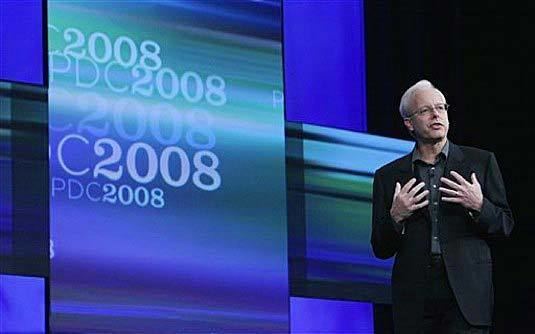Website azure.microsoft.com | ||
 | ||
Initial release February 1, 2010; 7 years ago (2010-02-01) Operating system License Closed source for platform, Open source for client SDKs | ||
Microsoft Azure /ˈæʒər/ is a cloud computing service created by Microsoft for building, deploying, and managing applications and services through a global network of Microsoft-managed data centers. It provides software as a service, platform as a service and infrastructure as a service and supports many different programming languages, tools and frameworks, including both Microsoft-specific and third-party software and systems.
Contents
- Services
- Compute
- Mobile services
- Storage services
- Data management
- Messaging
- Media services
- CDN
- Developer
- Management
- Machine Learning
- Regions
- Design
- Deployment models
- Timeline
- Privacy
- Significant outages
- Certifications
- References
Azure was announced in October 2008 and released on February 1, 2010 as Windows Azure, before being renamed to Microsoft Azure on March 25th 2014.
Services
Microsoft lists over 600 Azure services, of which some are covered below:
Compute
Mobile services
Storage services
Data management
Messaging
The Microsoft Azure Service Bus allows applications running on Azure premises or off premises devices to communicate with Azure. This helps to build scalable and reliable applications in a service-oriented architecture (SOA). The Azure service bus supports four different types of communication mechanisms:
Media services
A PaaS offering that can be used for encoding, content protection, streaming, or analytics.
CDN
A global content delivery network (CDN) for audio, video, applications, images, and other static files. Can be used to cache static assets of websites geographically closer to users to increase performance. The network can be managed by a REST based HTTP API.
Azure has 30 point of presence locations worldwide (also known as Edge locations) as of December, 2016.
Developer
Management
Machine Learning
Regions
Azure is generally available in 34 regions around the world, and has announced plans for 4 additional regions.
Design
Microsoft Azure uses a specialized operating system, called Microsoft Azure, to run its "fabric layer": a cluster hosted at Microsoft's data centers that manages computing and storage resources of the computers and provisions the resources (or a subset of them) to applications running on top of Microsoft Azure. Microsoft Azure has been described as a "cloud layer" on top of a number of Windows Server systems, which use Windows Server 2008 and a customized version of Hyper-V, known as the Microsoft Azure Hypervisor to provide virtualization of services.
Scaling and reliability are controlled by the Microsoft Azure Fabric Controller so the services and environment do not crash, if one of the servers crashes within the Microsoft data center and provides the management of the user's Web application like memory resources and load balancing.
Azure provides an API built on REST, HTTP, and XML that allows a developer to interact with the services provided by Microsoft Azure. Microsoft also provides a client-side managed class library that encapsulates the functions of interacting with the services. It also integrates with Microsoft Visual Studio, Git, and Eclipse.
In addition to interacting with services via API, users can manage Azure services using the Web-based Azure Portal, which reached General Availability in December 2015. The portal allows users to browse active resources, modify settings, launch new resources, and view basic monitoring data from active virtual machines and services.
Deployment models
Microsoft Azure offers two deployment models for cloud resources: the "classic" deployment model and the Azure Resource Manager. In the classic model, each Azure resource (virtual machine, SQL database, etc.) was managed individually. The Azure Resource Manager, introduced in 2014, enables users to create groups of related services so that closely coupled resources can be deployed, managed, and monitored together.
Timeline
Privacy
Microsoft has stated that, per the USA Patriot Act, the US government could have access to the data even if the hosted company is not American and the data resides outside the USA. However, Microsoft Azure is compliant with the E.U. Data Protection Directive (95/46/EC). To manage privacy and security-related concerns, Microsoft has created a Microsoft Azure Trust Center, and Microsoft Azure has several of its services compliant with several compliance programs including ISO 27001:2005 and HIPAA. A full and current listing can be found on the Microsoft Azure Trust Center Compliance page. Of special note, Microsoft Azure has been granted JAB Provisional Authority to Operate (P-ATO) from the U.S. government in accordance with guidelines spelled out under the Federal Risk and Authorization Management Program (FedRAMP), a U.S. government program that provides a standardized approach to security assessment, authorization, and continuous monitoring for cloud services used by the federal government.
Significant outages
Documented Microsoft Azure outages and service disruptions.
As of December 4, 2015, Azure has been available for 99.9936% of the past year.
